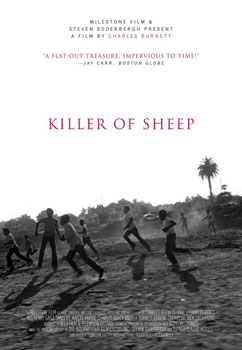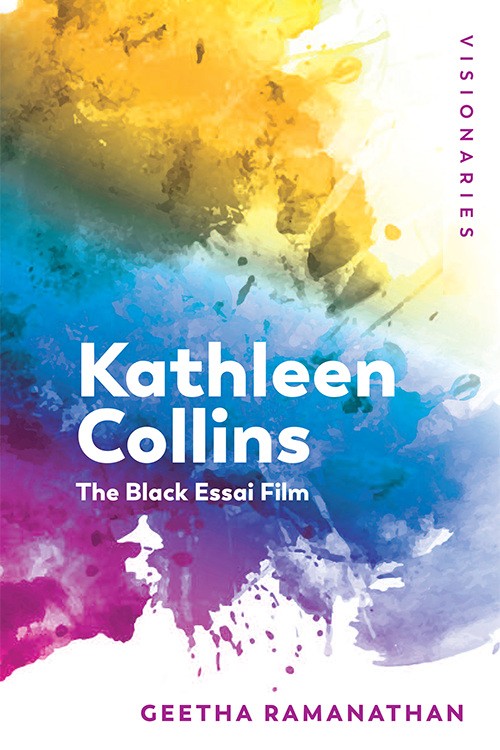
In part four of this five-part series, Geetha Ramanathan uses two examples to consider how African American films of the 1970s and 1980s explored America’s relationship with race. Click here to read part one of the series.
Over the course of African American filmmaking, the racism endemic in US society, and its impact on communities and individuals alike has been critiqued in modalities that include the symbolic, the realist, the generic, and the formulaic. Filmmakers from the LA Rebellion such as Charles Burnett, Haile Gerima, Julie Dash were invested in using film to shift social consciousness. The New York School of Black Independents were more diverse; however many were known for their participation in more than one form of art. The African American films made during the 1970s and ’80s carry resonances for us today as the US airways are filled with conversations that implore people to listen, rather than to talk about race, and to understand that Black art is not merely a tool for others to learn about racism. Among the many films are:
“Killer of Sheep” Charles Burnett USA UCLA, 1977.

Burnett’s “Killer of Sheep” did not have a theatrical release, and was shown largely in venues such as black churches, and community events in a tour undertaken by Pearl Bowser, the archivist. His oeuvre, particularly this film, has a huge place in the history of film. Widely acknowledged as “international,” the film also carries its heft as an all-American riff on the alienation of the worker. With its spare dialogue, passing references to the vernacular, its emphasis on gesture, aural and kinetic communication, Burnett sets up the black community in south-central LA as the subject of the film. Each sequence captures a different group, with kids being witnesses to the present and the future. The train tracks that the boys cross, the mask the child wears, the heads of sheep in the slaughterhouse all function at the realistic and symbolic levels.
The script is literary, and none of the scene shifts are motivated by storylines as it becomes apparent to the viewer that this is a portrait of the community as a whole. The soundtrack plays “What is America to me” as we see kids playing with a top in an open field by tunnels and train tracks. The motif is answered by the various choices the community makes, incessant work, petty theft, orderly assimilation. Kids, forever present, running across rooftops, sulkily demanding money are silent witnesses to the struggles of the community. Stan works in a slaughterhouse, the close-ups of the sheep and the sheep heads that are interjected in the film elude fixed interpretation; the manifest or surface level slipping away from us as the symbolic lends richness. The slow pace of the film makes us feel we are waiting for something, but we have no clue as to what we are waiting for. This mood conveys the blues, of the larger lingering reflection on endless toil.
A complete study in the alienation of labour, the film nevertheless soars when it shows us how a community without access to the “pursuit of happiness” finds joy in a sudden awareness of life, fleeting and rare, but all the more grand. Like a record that you love, you can watch this movie over and over again for the largeness of its verdict on race and its vision of the community.
“Do the Right Thing” Spike Lee USA: A Forty Acres and A Mule Production, 1989.
Lee follows the activities of some of the members of a diverse community in Brooklyn. His signature low angle slanted shots lend the characters an authority on the screen that overwrites the urban realism of the film. Low angle close ups further accentuate the characters’ sense of space. And it is the struggle for equality in the space that turns a very hot summer day into a deadly police attack on a young unarmed Black man. Here too, the streets function as one of the chief settings, as in the Burnett film. Mookie, played by Lee, walks back and forth delivering pizzas for the Italian American pizzeria’s owner, Sal. En route, we see Mother Sister, a fate like character, watching over the people from her balcony, and the three old men, called the Mayors, who function as a chorus in this classically structured film.
The pizzeria, patronized by young black people in the neighborhood, features photographs of famous Italian Americans on the walls. The film cleverly links the economic with the abstract, when a young man demands why there are no representations of African Americans on the walls. The fight is over ownership, not merely of property, or of space, but over their identity, connected to the right to have their image represented. Representation here takes on a heavier meaning, implying that Black people need to have a say in what images are valued, in order to assert their rights as a community that contributes to the neighborhood, city, and nation.
About the Author

Geetha Ramanathan is the author of Kathleen Collins: The Black Essai Film (Edinburgh University Press, 2020). She is Professor of Comparative Literature at West Chester University where she teaches Comparative Literature, film and Women’s Studies (including Feminist Film and African American Film). Her interests include modernist, feminist and third world literature.





